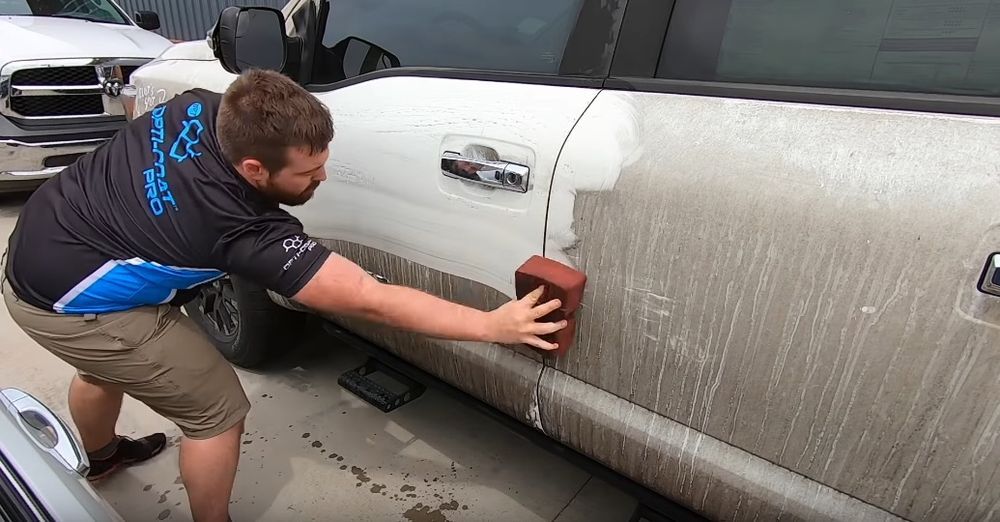Which Kind Of Car WASH AND WAX Is Best For Your Finish?
WASH AND WAX Just like there are over a method to cook an associate degree egg, there are many sorts of automobile washes. However, don’t take that to mean all laundry ways square measure equal—far from it. Each comes with its own set of upsides and drawbacks. Those professionals and cons, however, aren’t forever clear. That’s why we’re here to run down each wash methodology, distilling the great and unhealthy to assist you to navigate the foremost necessary part of upkeep.
Method #1: launder
Ask any particularization professional and they’ll tell you the safest thanks to washing your automobile may be a launder. There are many alternative ways a launder is often done, starting from the standard two-bucket methodology to high school, pressurized foam cannons, however, whichever method you go, all of them have you ever (or your detailer) siding up water with soap and laundry the vehicle with a soft mitt in hand.
So what will a launder look like? At our particularization operation, Simon’s Shine search, we tend to begin with a pre-wash within which we tend to cowl the vehicle with snow foam and rinse the automobile off. Not 100 percent necessary, however, it helps North American countries get a lot of thoroughly clean. From there, we tend to coat the vehicle once more with a layer of suds that we tend to then agitate with soft wash mitts. The froth breaks the contaminants down whereas the wash mitts facilitate breaking them loose. We tend to then rinse and dry.
This kind of wash needs a decent chunk of your time, a range of kits, and if you’re obtaining it done by knowledgeable, a touch of cash. However however mild it’s on the end and the way through it’s at obtaining off serious contamination, it’s the foremost effective reasonable automobile wash you’ll be able to do.
PROS:
Minimizes scratching
Can take away serious contamination
CONS:
- Takes longer than alternative ways
- More expensive than automatic washes
- Requires a lot of instrumentality than alternative ways
- Requires a great deal of water
- Tough to try to with restricted house
- Tough to try to in colder temperatures
Method #2: dry Wash
A dry wash utilizes solely a spray-bottle product and several other microfiber towels. You just spray the surface along with your dry wash product, then wipe with a microfiber towel. Individuals use dry washes for a variety of reasons: they don’t have the house for a launder, they can’t use water, they’re on the road, etc. Basically, it’s an associate degree possibility of pies alert.
Why’s that? Well, dry washes aren’t nice at removing serious sludge. They’ll create fast work of mud, however, if you simply dawned from off-reading on a muddy path, you’re not reaching to have a lot of luck. Another downside is their potential for scratching. Although dry wash merchandise square measure developed to heavily lubricate the surface, they don’t quite approach the slickness of a foamy launder. As such, there’s a decent probability you’ll develop and drag some particle across your end, inflicting a scratch.
PROS:
- Doesn’t take as long as a launder or rinse less wash
- This can be through the restricted house
- Doesn’t use water
- Only needs a dry wash product and microfiber towels
- CONS:
- More possibilities for scratching
- Can’t take away serious contamination
Method #3: Rinse less Wash

A rinse-less wash is totally different than a dry wash. In a way, it’s kind of a hybrid between a launder and a dry wash. With a rinse-less wash, you’ll take a satiny low quantity of your rinse-less wash product and blend it into a bucket of water. It won’t turn out any suds, though—that’s why you ought not to rinse. All you would like to try to do once you’ve washed a district is wipe all the way down to dry.
Rinse fewer washes are often through with wash mitts or microfiber towels. Several detailers square measure a fan of the “Garry Dean Method”, which involves soaking many microfiber towels in an exceedingly bucket stuffed with rinse-less wash product and water. You’re taking one microfiber towel, wringing it out, and setting it aside to dry. Then, you spray a panel with a pre-wash product and grab a soaking microfiber towel and begin improvement. You’re taking your wringed-out drying towel, and drying the panel, so finally, you’re taking a contemporary, dry microfiber and completing the drying method. Repeat panel-by-panel till your vehicle is clean.
A rinse-less wash methodology tends to be favored by those below water restriction or with restricted houses, United Nations agencies are involved with the scratching a dry wash would possibly cause. It still scratches over a launder, however so much but a dry. You’re additionally not reaching to be able to take away serious solute still as you may with a launder.
Method #4: Automatic Wash

WASH AND WAX Automatic washes conjointly referred to as “tunnel” washes, typically involve driving your vehicle onto a conveyor, that leads you thru a series of brushes and blowers. The bristles on these rough brushes square measure typically contaminated with abrasive grime from previous vehicles which may heavily mar your end. They conjointly utilize harsh cleansing chemicals which will strip waxes/coatings and even dry out your paint, which may cause it to crack or maybe the color to weaken.
So why would anyone wish to use one in all these washes? Simple: they’re cheap and don’t take long, which makes them the foremost standard reasonably wash out and away, simply out of sheer convenience. the general public either doesn’t apprehend or doesn’t care however badly it’s damaging their end. that isn’t essentially dangerous for skilled detailers; all that scratching is what makes tons of individuals get hold of a paintwork correction!
